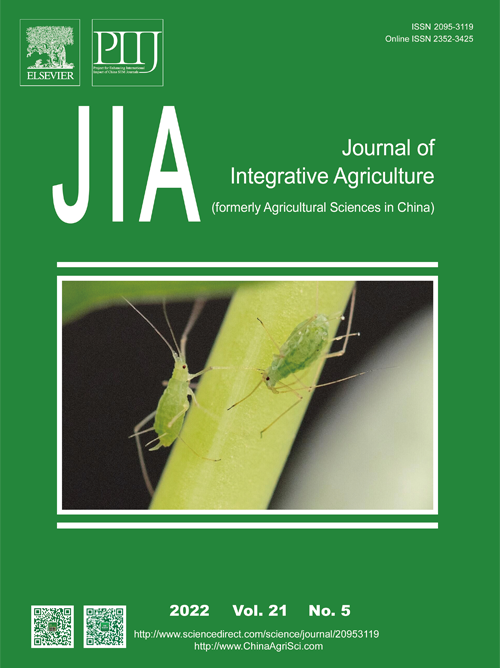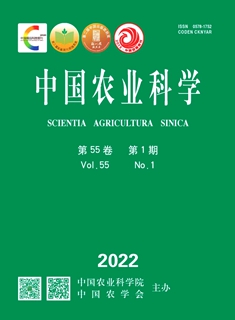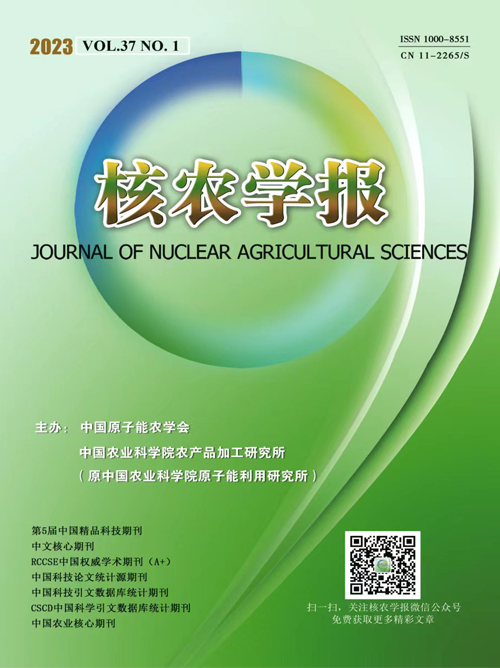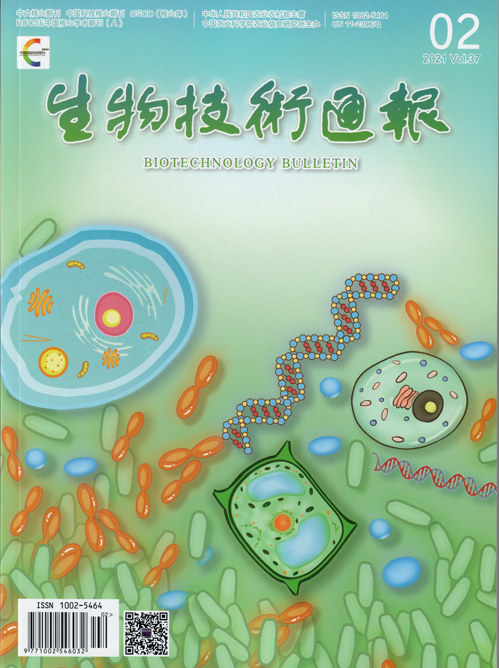
IYM 2023: Millets can prove very helpful in achieving SDGs of ‘No Poverty and ‘Zero Hunger’ - Prof. DiaoXianmin, Chinese Academy of Agricultural Sciences
The year 2023 is being celebrated as International Year of Millets (IYM 2023) globally, under a proposal sponsored by India and endorsed by the United Nations General Assembly (UNGA). India’s proposal to declare 2023 as International Year of Millets was accepted by UNGA on 5th March 2021 with the aim to create awareness and increase production & consumption of millets.
Prime Minister Narendra Modi who led India’s efforts in this regard has a vision to make IYM 2023 a ‘People’s Movement’ alongside positioning India as the ‘Global Hub for Millets’. India accounts for almost 80% of Asia’s and 20% of global Millets’ production.
Being grown in more than 130 countries at present, Millets are considered traditional food for more than half a billion people across Asia and Africa. However, their cultivation is declining in many countries, and their potential to address climate change and food security is not being realized in full.
Prasar Bharati Special Correspondent (PBSC) in Beijing spoke to Prof. DiaoXianmin, the leading scientist in Millets research at Chinese Academy of Agricultural Sciences (CAAS) in Beijing on what IYM 2023 means for China and the world in terms of food security, Green Agriculture and Sustainable development by mainstreaming Millets.
Prof. Diao was a steering committee member for IYM 2023,representing China.
In his exclusive interview, Prof. Diao said that Millets can prove very helpful in achieving the Sustainable Development Goals (SDG) of ‘No Poverty and ‘Zero Hunger’.
Text of Full Interview:
PBSC, Beijing:United Nations has declared 2023 as the International Year of Millets (IYM). China also supported this initiative as the international Year of Millets is a unique opportunity to raise awareness of the important role of millets to achieve the Sustainable Development Goals (SDGs) of ‘No poverty’ and ‘Zero hunger’. How do you see this initiative.
Prof Diao: Its my honour for the talk. Actually, for this initiative, I think its very important because, in agriculture, we all know maize, wheat and rice but many people do not know that there are many other crops, mostly millets. These crops are also very important. They are representing developing countries where people use these crops as their main staple food.
So, I think this will not only for the officials and governments but for ordinary people, for the consumers, also for the industry, for the transportation and everything else. This will help in the future to increase crop diversity, agriculture diversity, also the food diversity. This will really help the world to help resolve the issues of hunger and poverty.
PBSC, Beijing:Millet is grown in 131 countries and is traditional food for around 60 crore people in Asia and Africa. China has been a millet growing country historically. Considering such an important role of millet in fulfilling dietary needs of people across the globe, do you think this initiative will help increase the governmental support for Millet’s production in different countries.
Prof Diao: I think so. If you look into the papers published in agriculture, focus is on rice and wheat, including basic research. Very few people publish research work in small crops such as millets. Millets in academic terms is called “orphan crop”. Very few people know about it.
So, I think this initiative for the ‘International Year of Millets’, will for sure increase the awareness, especially the governments to understand its importance. With this, I think governments will increase the investment for research including the basic germplasm, collection, breeding, agriculture and even industry.
In China, we have two kinds of basic millets since old times, one is Foxtail millet and the other one Broomcorn (Proso) millet. These two kinds of millets originated from northern part of China in the dryland area in rainfed agriculture. In recent times in last hundred years, other crops came to China. These two kinds of millets are main food in the mountain regions, in dryland area.
But for the research, investment is relatively less than the big crops. So, I think this initiative for the ‘International Year of Millets’, will let the governments know that these crops are also important for increasing investment in basic research, in breeding, in cultivation and many other aspects. So, this will raise the level of their protection in future.
PBSC, Beijing:Agriculture Experts say this initiative will help mainstreaming Millets by enhancing their acceptability and demand as an important part of people’s diet as it could not get its due recognition despite high nutritional values and health benefits. This will also help in fighting the global food crisis. Do you think this will help in popularizing millets in other parts of China and the world.
Prof Diao: Yes. For Sure. In China, this will increase the awareness of young people about millets. Because millets are traditional food for elder people, they know this is very good food. But for the young generation, they rarely eat it as the main food as compared to rice and wheat.
I think ‘International Year of Millets’ will increase the consumption of millets, especially for the young generation, not only in China and developing countries but also in the developed countries – in Europe and in America. Millets are nutritious, and many have medicinal properties and functions. Also, millets have very balanced nutrition.
I think this opportunity of ‘International Year of Millets’ will help the world know – “Millets are healthy, consume Millets, Millets are for everyone – old and young”. So, this will increase the millet production in the future. It will help not only agriculture but also related industries.
PBSC, Beijing:In addition to health benefits of millets, at Global level it would be a boon for farmers by improving their livelihoods by creating direct and indirect employment and will provide ecological benefits by protecting precious natural resources - soil and water due to crop diversification. Do you think it would be a good idea for governments to collaborate for this campaign, share the best practices, research papers and develop a strong supply chain for millets in global markets.
Prof Diao: Actually, the modern agriculture depends on fertilizers and is water intensive. But for sustainable agriculture, we don’t have resources. If we talk historically, millets are sustainable, that why they have a long history. They use less water, less fertilizer. So, this is very good for “Green Agriculture”. I do think, “Millet cultivation is Green Agriculture”. It is good for our atmosphere, good for climate change mitigation.
I think, Food and Agriculture Organisation (FAO) can organize relevant activities, and this is an opportunity for different governments to collaborate, exchange their agriculture experiences. This will also help scientists to exchange their research in millet related agriculture. This activity will increase the action on the ground in regard to millets agriculture.
PBSC, Beijing:China accounts for about 5% of global millet production. As we know, millet is also termed as ‘nutri-cereals’ and ‘future super food’. Do you think this campaign will help raising awareness about the farming of millets in China in addition to main cereal crops like rice, as millets grow well in dry regions as rain-fed crops and require less inputs in terms of fertilizer and water as compared to rice and wheat. There is much research in rice. How do you see this campaign is going to bring millets in the similar category to fulfill the dietary needs of Chinese people to reduce the stress on traditional cereal crops.
Prof. Diao: China has three main kind of millets – Foxtail millet, Broomcorn millet and Sorghum. In recent years, Chinese government has started to understand the importance of small crops. Recently, they have tried to increase the investments in basic research of millets in China Agriculture Research system. I think, increasing investment in millets crops can help rise their production levels.
Also, the ‘International Year of Millets’ can help the young chinese to increase the consumption of millets as their diet which may also give a push to millets related food processing industry due to demand.
China, especially in northern parts, is very dry. This year, the dry region is very large. Even the Yangtze River has lot of dried-up areas. Millet is a drought-tolerant crop. So, in the future, millets may prove to be a big crop, very important because it uses less water.
CAAS has millets research section. We have ongoing research for drought tolerant and salt tolerant crops which will help in establishing millets as a big crop for the dry and changing climate. We have a research center in Beijing which does research in breeding and collaborates with many regions in China like Shanxi, Hebei, Inner Mongolia, Shandong – mostly northern parts of China because millet is in the dry land areas.
PBSC, Beijing:Millets are suitable for cultivation under changing climatic conditions. Millets can help to phase out climatic uncertainties, reducing atmospheric carbon dioxide, and can contribute to mitigating the climate change. Do you think Millets can be a good bet for future climate change cooperation by supporting the food sufficiency and sustainable farming.
Prof. Diao: Yes. There are two aspects of this. One is using millet crop for sustainable agriculture for the changing climate. In northern parts of China, in Hebei area, rains are less and under ground water level is decreasing quickly. So, we need to use millets to replace the big commercial crops to save water. With the use of modern research and technology, we can increase the yield of millets. Sorghum is high yield crop, but taste is not good. But with the use of modern technology, taste can also be changed which can help it become staple food. This is direct use of millet crops for future sustainable agriculture.
Also, from basic research, we will know why millet crops consume less water, why they are drought tolerant and slat tolerant. When we know these genes and basic mechanism, we can transfer the basic mechanism to the main crops – rice, wheat and maize to help them become drought tolerant. Millet research is very important from these two aspects especially in climate change mitigation and for sustainable agriculture.
He said, India is a millet growing country with many different kinds of millets. India and China can exchange their experiences and knowledge in millets research which in turn can help ensuring food security for world’s two largest populations.
In China, millets are mainly in northwest part which is a dry land with rainfed agriculture. Foxtail millet and broom corn millet are being used as staple food in mountain areas. Many traditional chinese food is being prepared using millets. Even oldest noodles are made of millets. Millets are also used in Chinese traditional drink Baiju and Yellow wine, especially from broomcorn millets.







